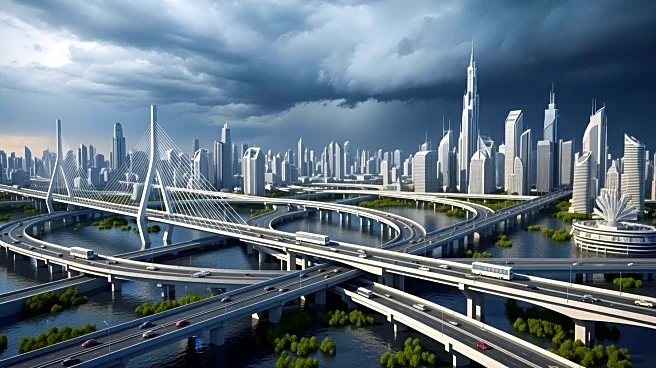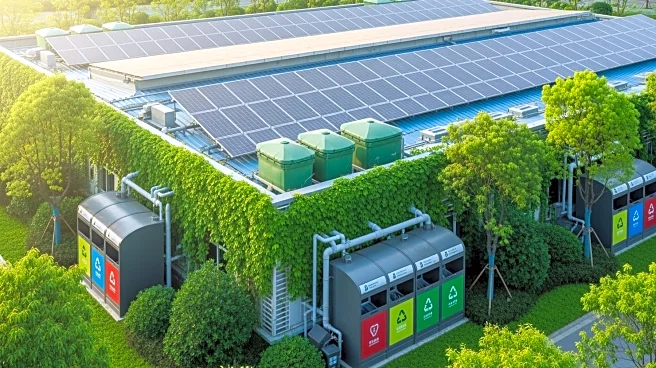What's Happening?
A recent study has assessed the resilience of urban infrastructure in the Pearl River Delta region of China under flood disaster scenarios. Utilizing the PSR model and extension catastrophe progression,
the study evaluates the pressure, state, and response of urban infrastructure to flooding. The research highlights the importance of transportation infrastructure enhancements, such as the Dongguan and Guangzhou Metro to Huizhou, in bolstering resilience. The study also notes the role of Shenzhen's emergency management system in establishing a joint prevention and control mechanism across cities. The analysis reveals disparities in resilience levels, with cities like Zhongshan and Zhaoqing lagging due to monolithic industrial structures and limited digital economic development.
Why It's Important?
Understanding urban infrastructure resilience is crucial for disaster preparedness and mitigation, especially in regions prone to flooding. The study's findings can inform policy decisions and infrastructure investments aimed at enhancing resilience. By identifying areas with lower resilience, stakeholders can prioritize interventions to improve infrastructure and emergency response capabilities. The research also underscores the significance of cross-city cooperation in advancing infrastructure projects, which can lead to more integrated and effective disaster management strategies.
What's Next?
The study suggests that continued investment in high-end industries and digital economic development could improve resilience in less developed cities. Policymakers may consider expanding the scope of resilience surveys to include other disaster categories, ensuring comprehensive preparedness. The findings could also prompt further research into the effectiveness of existing infrastructure and emergency management systems, potentially leading to policy adjustments and new initiatives.
Beyond the Headlines
The study highlights the broader implications of urban planning and development in disaster-prone areas. It raises questions about the sustainability of current infrastructure models and the need for innovative approaches to urban resilience. The research also points to the potential for technological advancements to play a pivotal role in enhancing infrastructure resilience, suggesting a shift towards more digitally integrated urban environments.











